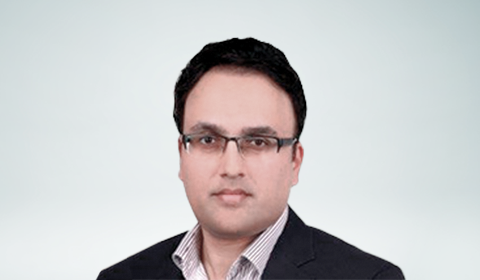The U.S. bore the full brunt of the credit crunch and proceeded with a programme of buying asset securities on a massive scale known as quantitative easing (QE). The effect of QE has been to drag interest rates down to low levels of 0.25% for a very long time.
The macroeconomic ramifications of this growth slowdown have been unprecedented:
- Europe and the BRIC countries (Brazil, Russia, India and China) have followed the U.S. into a low economic growth path.
- As the U.S. benefits from cheap money, hopes of a Federal Reserve Bank rate increase have sent the dollar up relative to other major currencies.
- Poor economic growth coupled with an exogenous increase in oil supply and strong dollar pummeled oil prices down to as low as $27 per barrel.
- The combination of the above led to deflationary pressures worldwide.
The MENA region (Middle East and North Africa) had already begun to experience the consequences:
- Low prices affect the oil exports, which represent a significant share of government revenues for many countries in the MENA area, especially Saudi Arabia (KSA), United Arab Emirates (UAE), Bahrain, Qatar and Kuwait.
- Many Cooperation Council for the Arab States of the Gulf (GCC) countries maintain a dollar peg; this means their currencies are directly linked to the U.S. dollar. Any U.S. interest rate review is therefore reflected domestically.
- Reduced government revenues disrupt the money transmission system by lowering deposits in banks and, as a result, increasing the costs of money market rates here.
- Similarly, lower government revenue would delay many ongoing investment projects – leading to unanticipated layoffs.
Impact on insurance
Regulators have stepped up with measures to strengthen the insurance framework, as they recognized the difficult times ahead. But this has been challenging to many insurers.
In the first nine months of 2015, financial reporting performance of listed UAE insurers showed 45% had underwriting deficits. The combined ratio of insurers was 103% during the same period, and net profits fell by 90% compared to the past period.
Faced with the prospect of a dilution of economic capital, MENA insurers need to consider their strategic options carefully.
Risk management
The most direct impact of the global economic turbulence is felt in the insurer’s profit and loss and balance sheet statements, most notably from changes in underwriting surplus as well as return on investment.
Because of the dollar peg maintained by several GCC countries, a low interest rate engineered by the Fed through QE would translate into low domestic interest rates as well. Therefore, short-term insurers – mostly health and property and casualty (P&C) companies, which invest heavily in short-term bonds – would experience a low return on surplus assets. Equity volatility would also add to this misery.
Going forward and as the Fed ends the QE programme, domestic rates are expected to increase. This will add to the insurers’ cost of capital.
Hedging
An obvious response would be to consider or improve an existing hedging strategy through better use of forwards/futures, swaps and options. For instance, selling a futures stock index gives the insurer the ability to lock in a certain price at the time of selling shares. Likewise, adopting interest rate futures or currency futures may enable companies to lock in the cost of future borrowing, thereby protecting against potential interest rate lift up or exchange rate volatility.
It is also common to expect a higher likelihood of default during difficult economic times. In order to protect against possible loss through default or counterparty risk, an insurer may consider buying a credit default swaps product with the aim of protecting against credit risk.
Capital market solutions
An alternative risk management strategy would be to securitize a pool of receivables through the creation of a special purpose vehicle (SPV). This provides direct access to the capital market and may imply lower cost of capital. Securities would be issued through tranches (the lowest tranches qualify for higher returns; they also face higher risks as opposed to mezzanine and higher tranches) and would be backed by the pool of receivables.
An alternative solution would be to consider financial reinsurance. This means engaging with a reinsurer who will be providing the capital (or loan) repayable out of any future surplus – and avoids the necessity to book a liability in some jurisdictions.
Reinsurance
It has been a common practice in the MENA region for many insurers to consider a quota share arrangement for risk transfer. In the face of stiff competition, many insurers have been relaxing underwriting standards to gain market share. A quota-share mechanism allows companies to offload a significant portion of risk while earning valuable commission upfront. This practice reduces the capital requirements, thanks to the risk transfer.
Business model
Insurers can reanalyze business models and consolidate core operations in order to offload any unprofitable activities.
Mergers and divestment
A merger is common in a difficult economic environment as it enables consolidation of market share, a reduction in unit cost through economies of scale and human capital transfer. Along the same line, insurers may consider expanding into business lines that may not be directly correlated to the current or anticipated economic travails -- such as P&C or new geographical markets, like Africa.
Takaful
Takaful is gaining rapid prominence within the MENA region (currently one of the fastest-growing regions) and provides a valuable alternative business option that has shown resilience in difficult economic times. The more common wakala – mudarabah model involves sharing risk and surplus between the takaful operator and the participants in a pre-defined ratio from the investment account and wakala fee payable out of the underwriting fund. If there turns out to be a deficit, an interest-free loan is advanced (called qard) by the operator and repayable out of future surpluses of the insurers or pool. This concept of paying the loan when a surplus is generated distinguishes the model from conventional loans and brings stability in the face of economic turmoil. It is not surprising to see the takaful concept becoming more popular recently and this is expected to continue.
Product reengineering
One effective way to improve resilience has been for insurers to differentiate their products. This is helpful in the face of stiff competition, especially when combined with innovative distribution channels that include digital support. One example is health insurers that have been developing low-cost products with a restricted provider network for client companies unable to afford more comprehensive coverage for their employees. This provides a cost-effective solution to meet needs while remaining compliant.
Business process reengineering
It is important for insurers to consider and test the soundness of internal business processes and, if possible, reduce the costs of operations by maximizing economic efficiency. For instance, in health, an increasing number of insurers are using third-party administrators rather than managing claims in-house. Another strategy for achieving more resilience has been to strengthen the underwriting and claims processes. This requires the strengthening of underwriting teams and implementation of strict guidelines, as well as rigorous actuarial pricing, to ensure sustainability of an underwriting surplus. Insurers are also investing in stricter claims adjudication to control costs. Fraud and abuse require special focus as it is estimated that 5% to 8% of health insurance claims within MENA could involve fraud.
Performance management
From a performance management view, it is common practice for insurers to align employee reward systems with the performance of the corporation. This alignment of incentives is crucial to reduce costs. Some insurers may adopt options or warrants to compensate the top management. This would align the costs with the company’s performance.
Enterprise risk management (ERM) framework
A survey by Ernst & Young showed that 40% of MENA insurers have not adopted ERM practices. It may be an appropriate time to consider implementing ERM to manage risks centrally within a given risk tolerance set by the board.
Adopting necessary measures
MENA insurers should consider and adopt ways to remain resilient in the face of difficult economic times. The options range from quick balance sheet dressing to using risk management instruments -- and to more elaborate options, like business process reengineering and product redesigning.
Insurers need to bear in mind that these strategic choices have economic costs and may imply sacrificing short-term profits for longer-term resilience.
It is within this context that regulators of some jurisdictions (such as KSA and UAE) have been stepping up measures aimed at improving the insurance framework. The new regulations include implementation of proper reserving, actuarial-led pricing and certifications, as well as introduction of better governance, controls and investment measures.
Through alignment between regulators and insurers, we can be hopeful for positive benefits, especially for those insurers bold enough to adopt the necessary resiliency measures as they face difficult times ahead.



